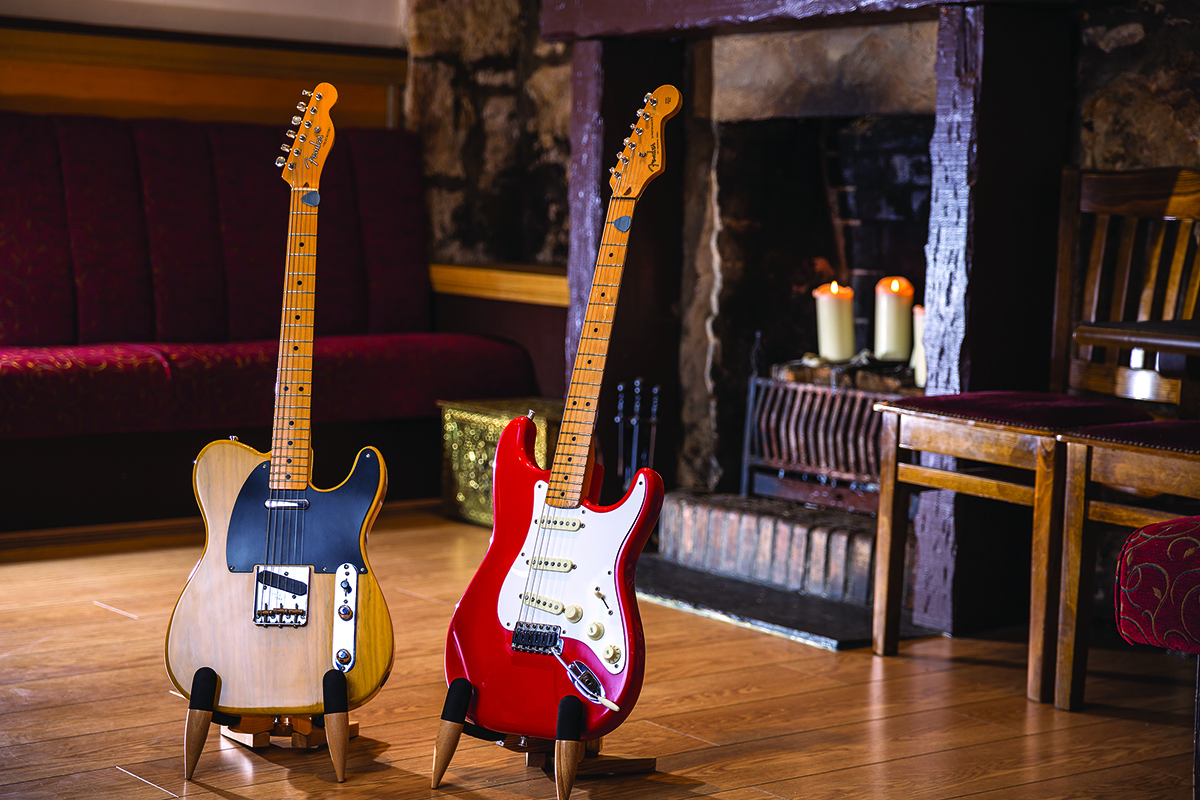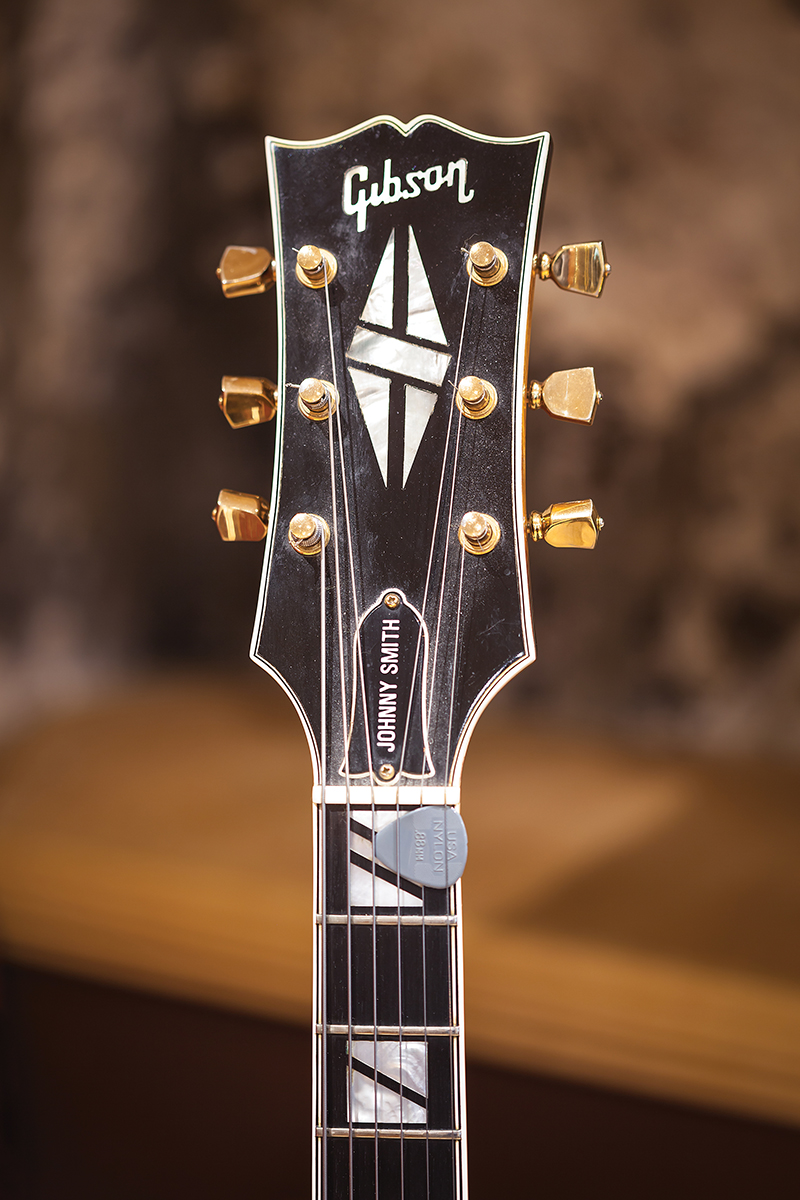Private Collection: Duncan Findlay, a Master Of All
Duncan Findlay’s guitars reflect a varied musical career that has incorporated musicals, orchestras, and advertising jingles. We find out how a jack of all trades has amassed a guitar collection that has helped him succeed in a fickle industry…
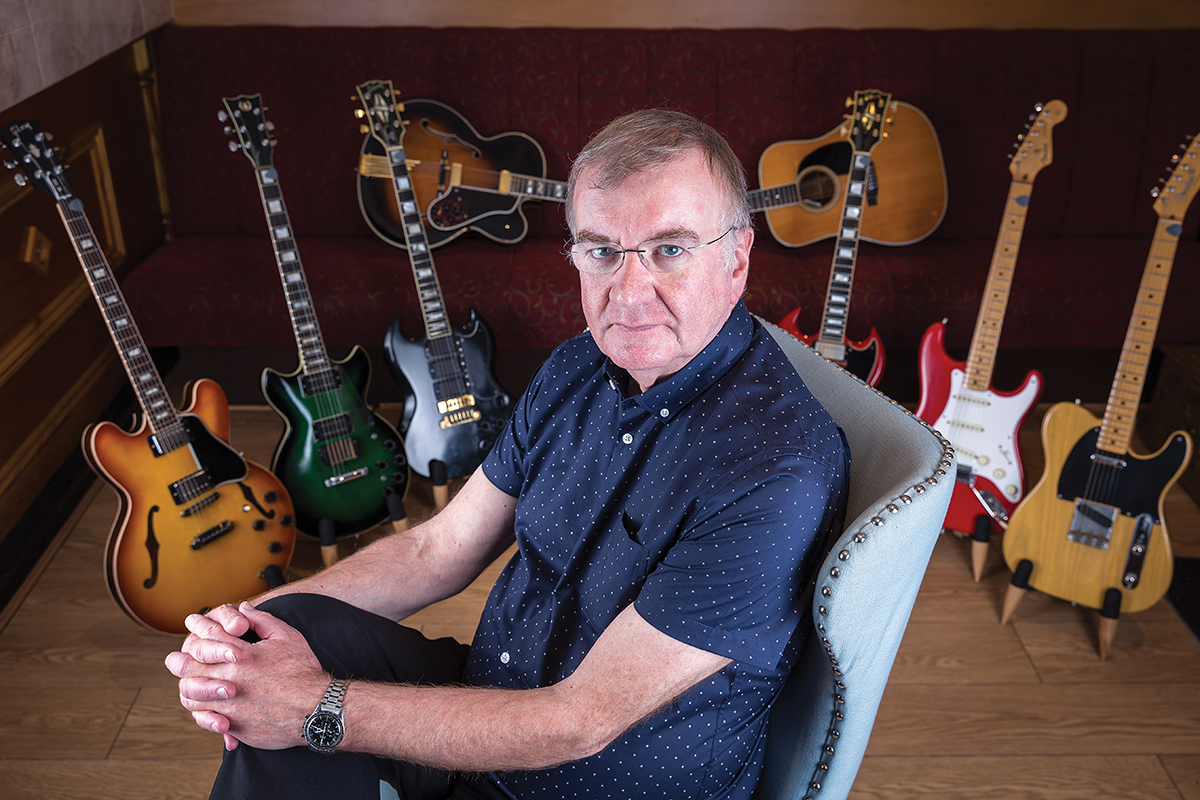
Duncan Findlay
After a career spanning six decades during which he has covered most mainstream musical styles, Duncan Findlay can safely say he knows a thing or two about the music business. But when it boils down to it, his well-earned reputation as a talented session player is based on his unequivocal ability to adapt.
“The key to working as a pro these days is your versatility,” he says carefully. “I can play virtually any style and play it accurately, because I’ve experienced it.”
And to be fair, he has. From sitting in on jam sessions in his parents’ Ayrshire pub and playing in a Jimi Hendrix cover band, to blasting through Count Basie tunes at jazz festivals and being a member of a fully fledged pop band that appeared on the Dutch version of Top Of The Pops, he’s done the lot.
He’s recorded advertising jingles for double glazing companies and crisp campaigns, and has held down a position in the BBC Scottish Radio Orchestra. He even has a regular slot with a contemporary Scottish dance band cheekily named Ceilidh Minogue.
“That is the key to making a living nowadays,” he says. “If you specialise in heavy metal; that’s the only area you’re going to work in. If that’s popular, then great. But if it isn’t; you can’t make a living. You’ve got to be able to do everything.”

These days, the 66-year-old is happily based in Tilicoutry, near Stirling, playing three to four gigs a week or deputising in touring musicals. “If the guitarist wants time off, I am happy to step in for a couple of weeks. I’ve been doing it a long time.”
His last ‘dep’ was in the musical Grease. “I enjoyed the first week because it was a challenge. By the second week, I was bored because I had cracked it. The thought of playing the same show for a year would drive me completely up the wall. It gets boring.”
Tools Of The Job
What doesn’t bore Findlay are his guitars, which include an array of Gibsons, Fenders and the occasional oddity. He says he finds paradise when he has all his instruments in one studio so he can select the best tonal options for his recording needs. Unfortunately the gang doesn’t get together all that often, so today’s gathering in his local gastro pub is a rendezvous to savour.
The first guitar to be pulled out of its case is Findlay’s trusted SG Custom, which he purchased for a £100 over 30 years ago. Notable for the EMG pickups that weren’t even available in the UK at the time, this dark menace has become Findlay’s number one, although it wasn’t always so cherished.

“It is a great guitar,” he says. “It’s been my go-to guitar since about 1980 when I bought it as a wreck. It had holes and gouges out of it. I took it off the wall in the shop and looked at the neck, played it and it was nice. The rest of it… well, when you shook it, it rattled like a pair of maracas!”
He bought the guitar for a quarter of its retail price and set about breathing life back into it. He retrofitted a TP6 tailpiece which added fine tuners, and sourced new pickups. “I’d bought the latest Toto record and read that Steve Lukather was using EMGs. They weren’t available in the UK, so I wrote to Steve care-of the label in the hope of getting some information. To my delight, he gave me EMG’s contact details telling me to mention his name as I might get a discount! I did and I had some of the first EMG pickups in the UK.”

Findlay took his SG from the bargain bucket to the stage of the BBC Scottish Radio Orchestra. “It can do absolutely everything from jazz to funk to country to metal. It can do everything across the board because each of the pickups has got a completely different set of characteristics. Each one has a unique output and frequency, so the values of the tone and volume pots are all different. I would never get rid of it. It isn’t worth an awful lot because it has been modified so much, but it is my guitar and it suits me.”
His black SG wasn’t his first flat-topped double-cutaway. That honour went to a 1973 SG he first saw on the wall of Bernie Webb’s home studio in the East End of London. “I noticed he had an SG Custom hanging on the wall,” Findlay recalls. “I asked if I could play it and fell in love with it instantly. I asked if he might sell it to me.
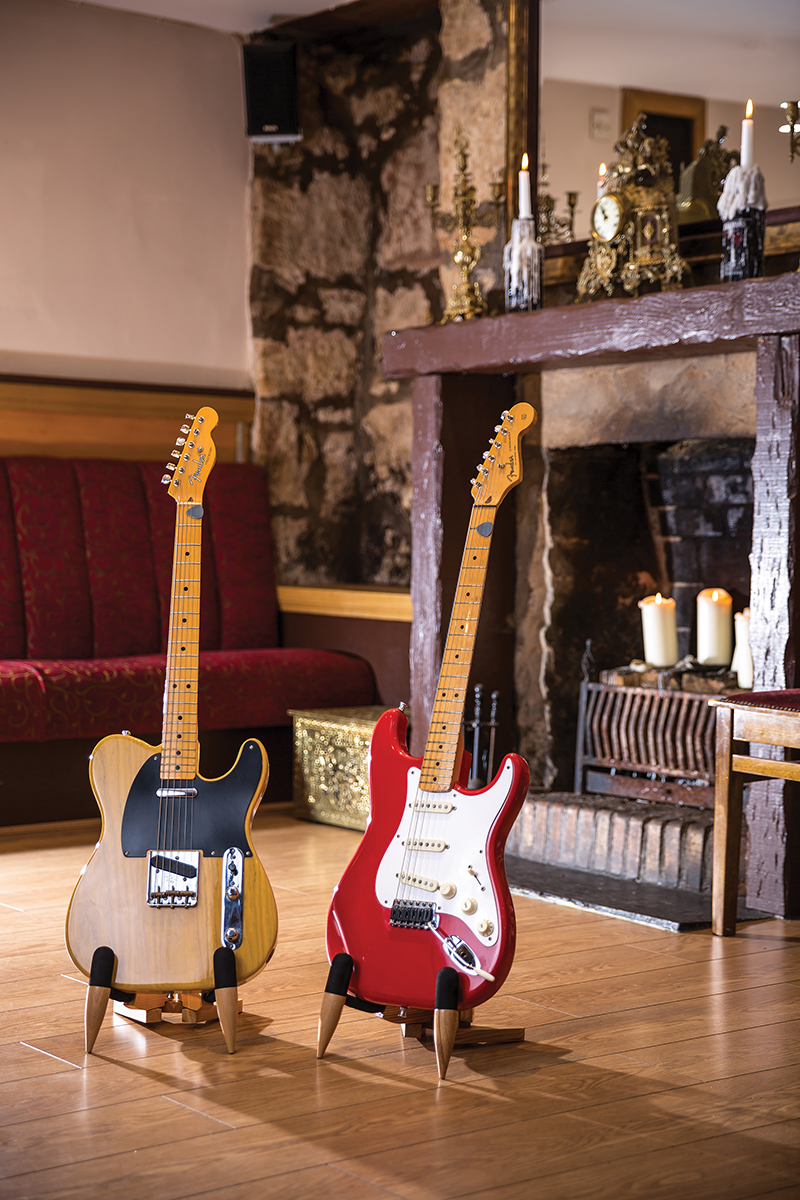
I was a Hendrix fan, so I had a white Fender Strat with a maple neck, which looked great but was an awful guitar. It broke strings and went out of tune, but Bernie was after it. He offered me a deal. My Strat plus £100 and I could have the SG. I borrowed £100 from my dad and bought it!”
Now, with two SGs to his name, Findlay has a host of tonal options at his fingertips. “This one has the original humbuckers, so it is tonally different to the active EMGs. It has an older sound. It’s nice to have the two of them.”
As with his black SG, Findlay introduced a TP6 tailpiece and Grover Imperial machine heads. He also added a sunburst finish and swapped the original controls for hatbox knobs, also known as Gibson speed knobs, which he finds easier to read and handle.
There is a clear pattern of personalisation in Findlay’s guitars, most notably in the tailpiece and speed knobs he adds. It turns out his latest acquisition is no different. The Larry Carlton Gibson ES-335 closely matches the three-time Grammy-winner’s prized semi-hollowbody with its ‘Carlton Burst’ finish, ’57 Classic humbuckers and custom neck profile. Unfortunately, Findlay bought his before test driving Mr 335’s signature model.
“I broke my golden rule when I bought this guitar,” he says. “I bought it from the US without having played one. I had been a Larry Carlton fan for many years and saw the advert, believed the hype and had to have one. There weren’t any around to try, so I just paid for it to be sent over. When it arrived, I hated it. The neck was like a baseball bat. I didn’t like and didn’t play it.”
The guitar lay in its case unused and unloved. With pangs of guilt pulsing through Findlay’s wallet, he eventually brought the 335 to Jimmy Egypt’s repair shop in Glasgow where the guitar received a “shave” using Findlay’s black SG neck as a template. According to Egypt, the depth of the SG neck at the first fret was “a very slim 18.5mm whereas Mr 335’s was decidedly bulkier at 24.5mm. Quite a difference in size and in that all important ‘feel’”.

Findlay spent £600 getting the guitar sorted, which meant trimming the neck and filing down the jumbo frets. “Jimmy took a lot off the neck,” says Findlay. “He did a great job, but when he was doing it, he said he was really nervous. He said it was like leaning out of a window of a high-rise block of flats backwards because he didn’t know exactly where the truss rod was. But it was worth it because the guitar is playable now, whereas before it was just uncomfortable. I feel if the instrument gets in the way, then the music suffers.”
As modifications go, dragging a hefty file down the back of a Gibson Memphis neck is certainly a brave move. But not all of Findlay’s guitars have been modified to such an extent. Indeed there is one that has received relatively few adjustments. In fact, his eye-catching Gibson Johnny Smith model is almost original.

“There is a strange aspect to it,” he says. “It actually has the neck and headstock of a Super 400, which is why it has such a huge headstock because originally it would have had to balance out the Super 400’s body, which is substantially bigger.”
He continues: “It’s a bit of homage to my father who loved archtop Gibsons and hated all-solid guitars, which he called planks. It was a generational thing. I’ve always wanted a proper archtop.”
Bought in 1983, the archtop only comes out for special occasions, which is entirely understandable considering its current value is around the £7,000 mark. Perhaps as a result, the only adjustments he has made are fixing a bracket to the floating scratchplate and replacing the original mini-jack ouput with a conventional equivalent. Some guitars aren’t meant to be messed with.
Two Of A Kind
The early 1980s were a golden era for Findlay. Averaging six three-hour sessions, eight jingles and four TV shows a week, he was “working like hell”. While there might not have been enough hours in the day, the upshot of making hay while the sun shone was having the funds to invest in a blossoming guitar collection.
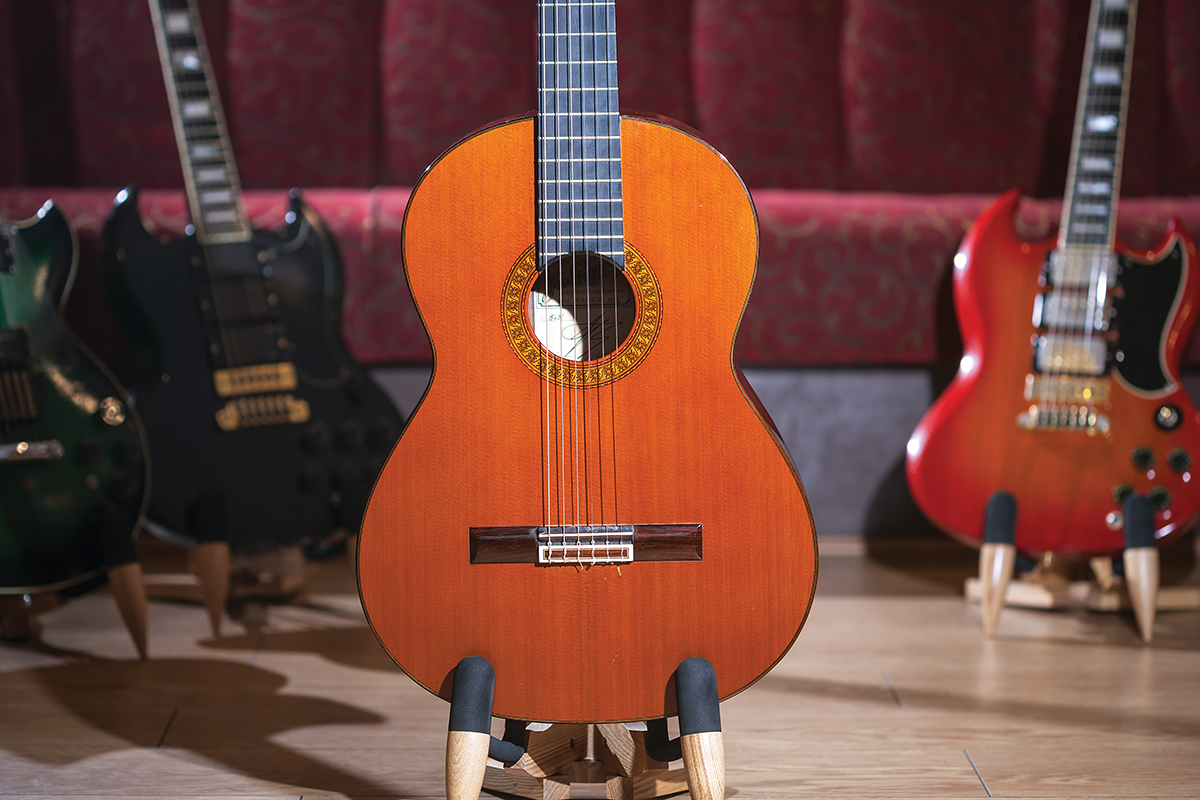
“One of my heroes was Roy Buchanan,” says Findlay reminiscing. “He played a butterscotch Tele, so when Fender launched the 1952 reissues in 1982, I thought; I’ve got to have one of these.”
As we know, Findlay has a golden rule about buying guitars, which he occasionally flouts. The first time he did this was when he purchased an untested 1952 Telecaster reissue. “I didn’t like it,” he says, “so I got Alastair Watt to re-profile the neck for me, and now it’s perfect.”
He uses the Tele for blues and country.
The 1957 reissue Stratocaster, bought during that same golden era, is more of an all-rounder. Used on a number of musicals, including Hairspray and Big Girls Don’t Cry, his reasoning for purchasing it is reassuringly familiar. “I saw the advert and thought; I’m having that.”

The Fiesta Red Strat with a maple neck screams twang, square glasses and the famed cross-over step. Few guitarists, after all, have sparked such guitar lust as Hank Marvin. “As a boy I really wanted one because of Hank, but my dad wrote it off as a plank of wood.”
The red Strat was a childhood dream realised, but it was also a chance to banish the demons of Findlay’s first Fender. “When it played, my white Strat sounded good. It was just such a pig with strings.”
Although he bought the red Strat new, Findlay upgraded the bridge with Graph Tech saddles. “The nightmare scenario when you’re playing in a musical is breaking a string, because the show can’t stop. Jimmy Egypt installed these very smooth Graph Tech saddles which makes the chances of breaking a string unlikely. This one has only broken a string once.”
As a conscientious and sought-after session player, Findlay has amassed a remarkable body of work that reflects his eclectic approach to music. It has helped him forge an unbroken career that has taken him from the orchestra pit to the stage and into the studio.
This approach requires him to adapt to briefs and have the guitars to do them justice. This policy reached a crescendo during the early 1980s when Findlay set about amassing a collection of instruments that could handle any job. As well as buying Gibsons and Fenders, he also acquired an electric mandolin, a bouzouki, a charango and a resonator uke, but his custom-designed guitar/sitar hybrid which he co-created with Alistair Watt perhaps embodies his adaptive approach more than any other guitar in his collection. “This is the star guitar for many reasons,” he says. “It is a complete one off.”
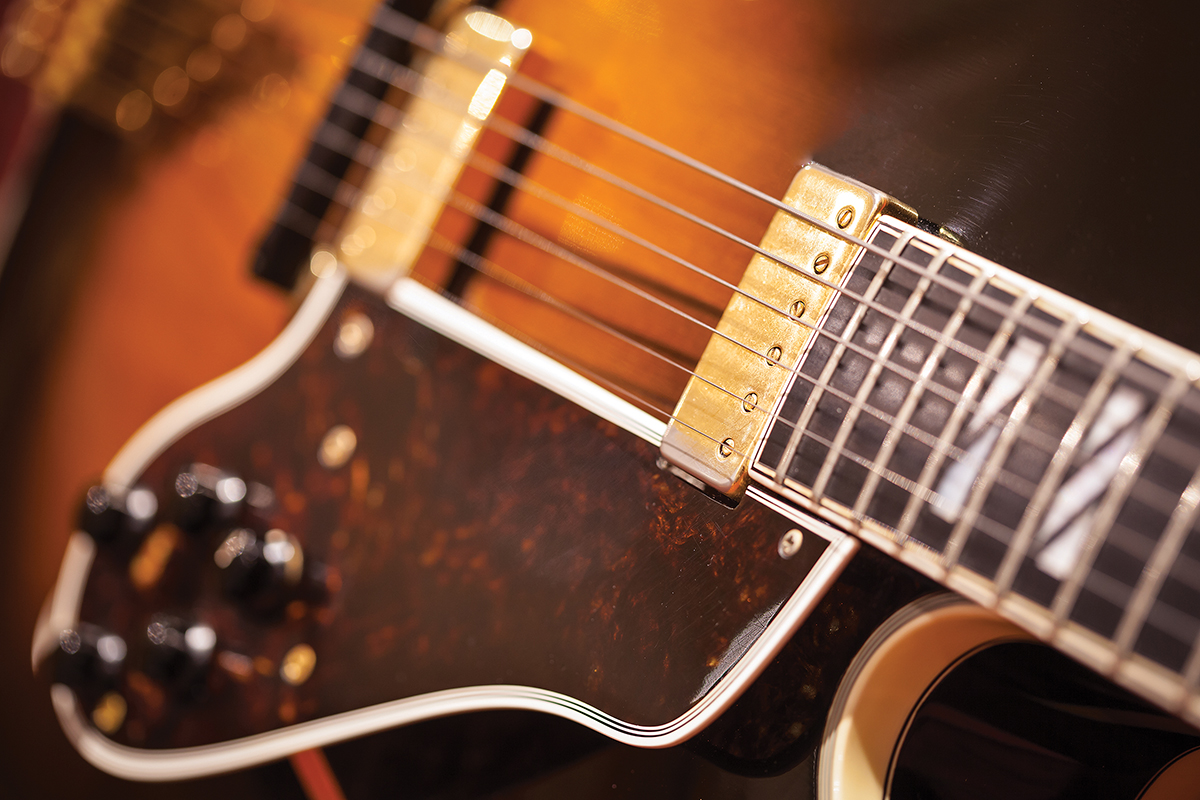
He continues: “The design is quite interesting. The neck is an exact copy of my black SG. It feels exactly the same, and every person who plays it, loves it. Alistair made a few guitars, but he never made anything like this again.”
It is a curious thing. The elongated bridge, which is made out of ebony from a church altar, pinches the strings and creates a sitar buzz. There is a soundboard around the back of the guitar where 13 sympathetic strings are hidden in a routed cavity. There is preamp to offer a top-end boost and the pickups were created by Bill Lawrence and are noted for their brightness. Run of the mill it is not!
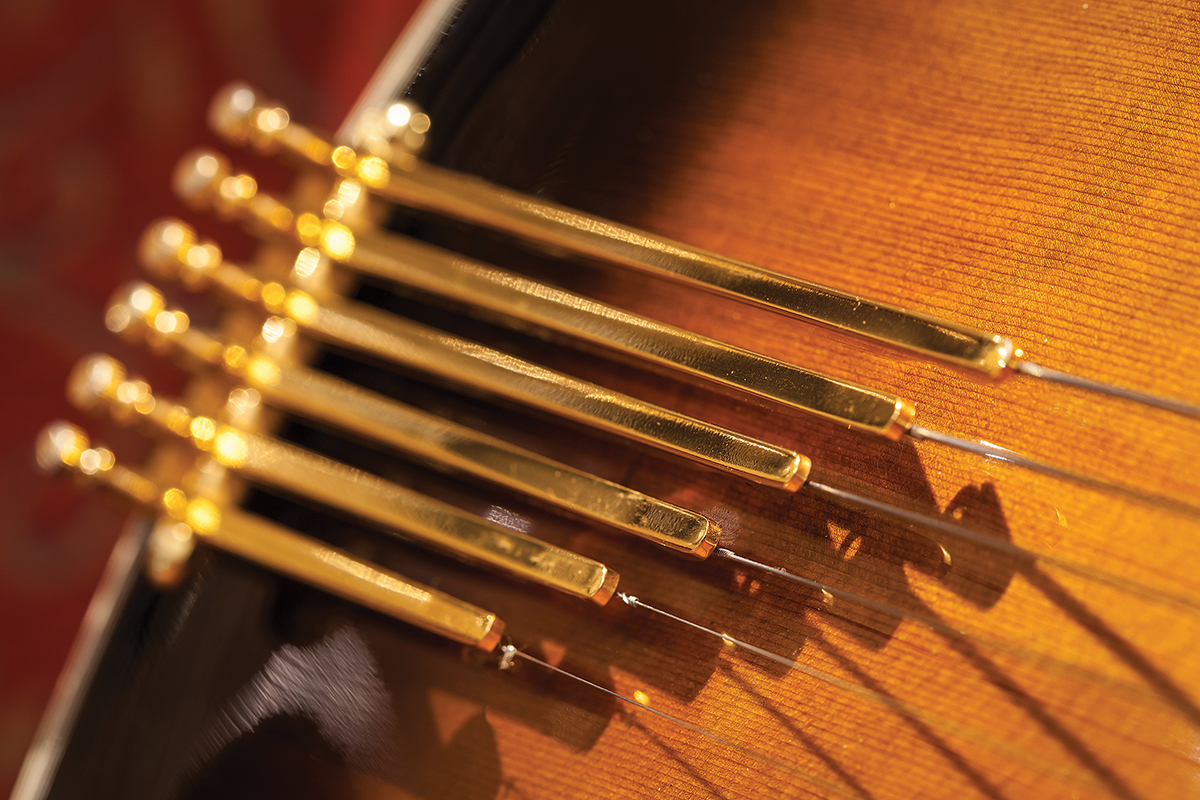
“It took years to build,” he says. “There is only one on the planet. I feel like a custodian looking after it for future generations! It is unique. It is the only one on the planet and is a superb testament to a much missed friend and luthier Alistair Watt.”
Our thanks to the Juniper Restaurant in Tillicoutry (www.juniperbarandrestaurant.co.uk) for letting us shoot at their location, and for Forth Music in Kirkcaldy (www.forthmusic.co.uk) for their technical assistance.

